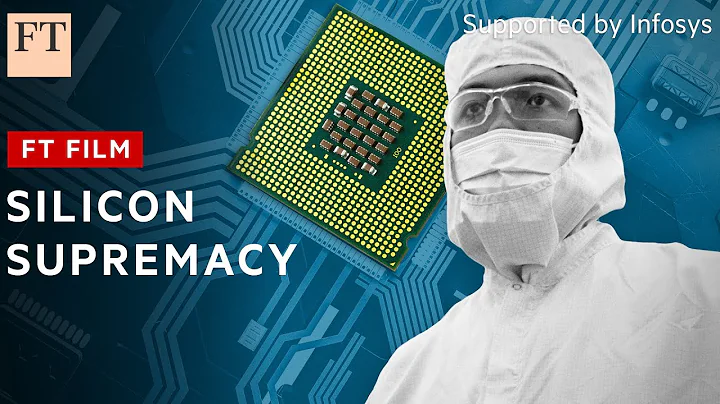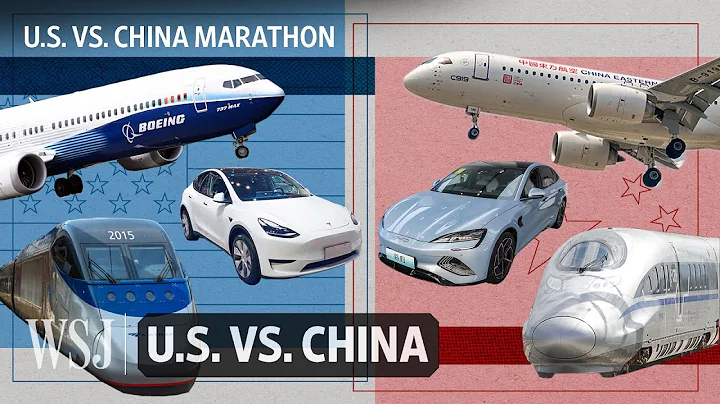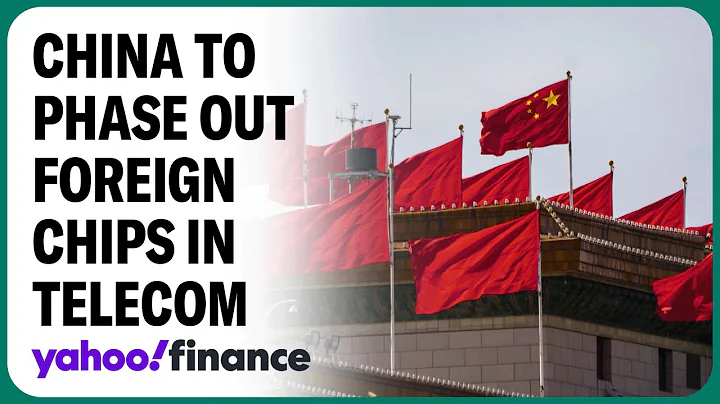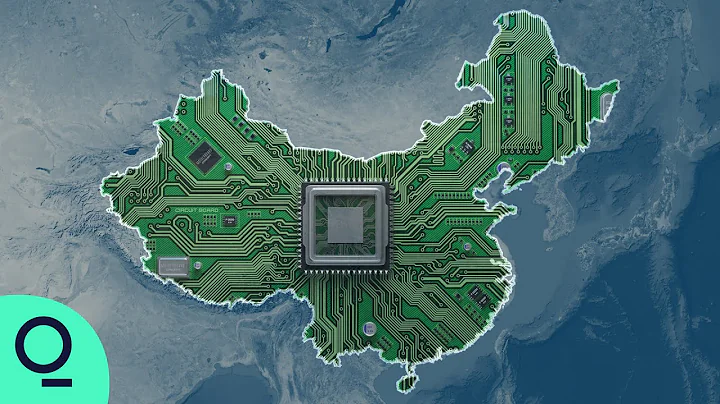In March this year, when the United States planned to upgrade its chip chain to impose extreme restrictions on Huawei, the Boston Consulting Group released a research report titled "How Restricting Trade with China Will End the United States' Leadership in the Semiconductor Industry" . The "Report" predicts that if the United States continues to increase its export controls on commercial chips to China, the competitiveness of U.S. semiconductor companies will be weakened, and the United States' long-term leadership in the semiconductor field will be threatened, which will have far-reaching consequences for the U.S. semiconductor industry. The negative impact even far exceeds the expected effect of "Made in China 2025".

Half a year is about to pass, and the current situation has reached a serious moment of survival for Huawei.
Under the influence of the second round of bans in the United States, chip foundries such as TSMC will no longer be able to continue producing chips for Huawei after the 120-day buffer period. Data shows that Huawei contributed 36.1 billion yuan in revenue to TSMC in 2019, accounting for 14% of TSMC's overall revenue. Moreover, Huawei's access to high-end chips from third parties is also subject to licensing controls. Qualcomm, MediaTek and even domestic Unisoc are not free to provide components to Huawei.

However, while Huawei's chip supply is blocked, the impact may be that the total revenue of these semiconductor suppliers may be reduced by about US$20 billion, which also involves the US supplier . US policies have brought negative chain effects to global semiconductors. The leading position of US technology in the semiconductor industry is becoming a new industry risk that cannot be ignored and has become a consensus .
my country’s semiconductor development trend cannot be stopped
China is a major importer of chips. After 2013, China imported more than 200 billion chips, and in 2019 it exceeded 300 billion. The expected imports in 2020 are still more than 300 billion. The most imported products are high-end chips. Chinese chip products account for 10.5% of the global market. The substitution of domestic chips in the mid- to low-end chip market is accelerating. In the first half of 2020, 100% of global semiconductor growth was contributed by China.
According to the China Semiconductor Industry Association (CSIA), the total reported revenue of semiconductor companies operating in China has grown by more than 20% annually over the past five years. Excluding the operations of foreign semiconductor companies in China, it is estimated that Chinese companies only accounted for 3% to 4% of the overall share of global semiconductor sales and semiconductor manufacturing in 2018. Among them, China has made the most significant progress in fabless design: First of all, China Fabless has seen a net increase in the past few years. A report from the China Semiconductor Association shows that we currently have more than 1,600 local companies, accounting for a total of 13% of the global market. In 2010, this number was only 5 %.

In terms of demand, China currently accounts for 23% of global semiconductor demand. This means that U.S. semiconductor companies, at their current size, account for only 14% of the total demand from Chinese terminal equipment manufacturers. Obviously, China is one of the most important markets for the U.S. semiconductor industry.
The “Made in China 2025” plan sets an ambitious goal of achieving self-sufficiency in semiconductors. The goal is to have domestic suppliers meet 70% of our semiconductor needs by 2025. To date, funding for the program is planned at $120 billion. In addition, China is also actively seeking overseas talents and merger and acquisition opportunities.
The phenomena and effects predicted in the March report of the Boston Consulting Group have begun to appear

In March this year, the Boston Consulting Group of the United States released a report titled "How Restricting Trade with China Will End U.S. Leadership in the Semiconductor Industry" , the report predicted the following consequences of the semiconductor containment policy, which seem to be coming true one by one as the situation develops:
1, the mainland has begun to vigorously support the comprehensive development of the local supply chain, even including investment in basic disciplines, our electronic equipment manufacturing Businesses will shift procurement to existing domestic suppliers as much as possible.
2. Even without industry-leading design tools, mainland alternative suppliers are staying competitive. They are looking for ways to expand and enhance their growing domestic chip foundry capabilities, or maintain ties with major foundry partners in Asia.
3. In the short term, mainland semiconductor equipment manufacturers will shift procurement to existing suppliers in Asia or other parts of Europe. These overseas suppliers have even reduced the use of American technology design tools and manufacturing equipment in order to cater to certain needs, and try to maintain unrestricted business with mainland customers. In the medium to long term, China may seek to completely or partially replace third-country suppliers with domestic suppliers to achieve its stated goal of semiconductor self-sufficiency.
4, China will accelerate the development of its local alternatives. In some cases, Chinese consumers can substitute other chips for the most advanced U.S. processors. For example, Chinese companies could design their own application-specific integrated circuits to replace American CPUs, GPUs, and FPGAs. Another option is to develop processors based on architectures that are not subject to U.S. export controls, such as the RISC-V open source architecture. Such highly complex semiconductor products require advanced design tools that are currently available only from U.S.-based suppliers, so China must develop its own set of design tools or find new supplies from third-party countries capable of designing these critical replacement components. business.
The Boston Consulting Group in the United States predicts that these consequences will directly lead to:
The impact will appear in 2 to 3 years. In 3 to 5 years, the revenue of US semiconductor companies from the Chinese market will be reduced by 55%, and the global market share of US companies will be reduced. A decrease of 8%, global revenue decreased by 16%, and R&D investment decreased by 13% to 25%.
Huawei is accelerating the de-beautification of the supply chain, and non-American suppliers are benefiting
Japanese

Since the Huawei ban, Japanese companies have benefited the most . Japanese companies have advantages in fields such as semiconductor materials. Huawei's purchase of parts and components from Japan increased significantly in 2019, and it is expected that the purchase volume in 2020 will exceed that in 2019. Huawei purchased 721 billion yen in parts and components from Japan in 2018, nearly doubling that in 2015. The purchase amount in 2019 will further expand and is expected to exceed the 1 trillion yen mark.
In 2018, Huawei purchased US$11 billion from the United States, ranking first in the world. However, according to current trends, it is a foregone conclusion that Japan will become Huawei's largest parts procurement destination in 2019.
Korean

Huawei stated that its procurement volume in South Korea in 2019 exceeded US$11.18 billion, and it will increase investment and procurement in South Korea in 2020. Huawei mainly purchases products from Samsung Electronics and SK Hynix in South Korea. The purchase amount in 2019 increased slightly from US$10.6 billion in 2018.
Huawei’s partners in South Korea include not only large companies such as Samsung Electronics, SK Hynix, and LG Display, but also many small and medium-sized enterprises. Even though Huawei has been deeply involved in Sino-US trade disputes, it has established trusting relationships with Korean companies. As an important place for Huawei to purchase parts and components, and as a "leader" in the industry, Huawei purchases memory and flash memory chips from Korean companies every year for up to 10 trillion won (approximately 58.2 billion yuan).
Samsung obtained nearly 20% of its revenue from the Chinese market in the most recent quarter, while SK Hynix’s revenue was as high as 40%.
Taiwanese

Taiwan, my country, is a leading global player in the production of semiconductor chips. As a result, it has become a critical supply chain presence for many U.S. and Chinese high-tech companies at a time when the Trump administration is working to reduce China's access to Taiwanese semiconductors.
From the perspective of the supply chain, there are many manufacturers in Taiwan related to Huawei, including TSMC, Largan, MediaTek, ASE Investment Holdings, Hon Hai Group, Nanya, Xinxing Electronics, Jingshuo, Macronix, Lianya, Crystal Technology etc.
In January this year, media reported that in order to cope with the possibility of higher-level restrictions in the United States, Huawei asked suppliers including Taiwanese manufacturers TSMC and ASE to move some of their production capacity to mainland China. It is reported that Huawei has actively contacted Taiwanese packaging and testing manufacturers, hoping that relevant suppliers' low-, medium-, and high-end packaging and testing production lines will be moved to the mainland, or to expand production capacity for local production. It hopes that the operation process planning will be completed before the end of this year.
The U.S.’s own chip industry is also beginning to feel the chill.
Following the statement from the U.S. Semiconductor Industry Association (SIA), the International Semiconductor Industry Association (SEMI) issued the latest statement on its official website, requesting the U.S. Department of Commerce to extend the Huawei ban for 120 days. SEMI said in a statement that export control measures will ultimately harm the U.S. semiconductor industry and cause huge uncertainty and disruption in the semiconductor supply chain, thereby ultimately undermining the healthy development of the U.S.'s own semiconductor field.

The International Semiconductor Industry Association believes that the U.S.’s unilateral expansion of restrictions may lead to more losses. In addition to eroding the existing customer base of U.S. products, it will also aggravate companies’ distrust of U.S. technology supplies and encourage other companies to work hard to replace U.S. technology.
Therefore, the International Semiconductor Industry Association requested in a statement that relevant US departments extend the grace period for products produced before August 17 by 120 days to ensure that decisions are predictable and immediate, and to provide products that are not related to 5G. High flexibility.
SEMI also urges the US government to adopt policies to reduce unintended consequences and reduce damage to US technological leadership. Global sales revenue is the main source of U.S. R&D in these technologies. The loss of global revenue will lead to a reduction in R&D, undermine U.S. semiconductor innovation, and thus harm the U.S.’s own interests.
Huawei is increasing inventory construction, trading time for space
Huawei and its suppliers are working around the clock to stock up on enough key chips before September 15, the date designated by the US government’s new ban.
To meet U.S. deadlines, some chip suppliers have even agreed to ship semi-finished products or wafers that have not been tested or assembled. Typically, when making chips, complex integrated circuits are built on wafers, which are then processed for packaging and testing. Only then are the finished chips shipped to customers such as Apple, Huawei and Samsung for final assembly in electronic devices.

Memory chip suppliers such as Samsung Electronics and SK Hynix, as well as camera lens suppliers Largan Precision and Sunny Optical Technology, are also trying to ship more to Huawei before the Sept. 14 deadline because their manufacturing processes are Using beauty technology.
After September 15th, TSMC will not be able to produce chips for Huawei. As the time approaches, TSMC is also making the final rush. It is concentrating all its efforts to produce 5nm-based Kirin cores to ensure the performance of the Mate 40 series as much as possible. use.
Sources in the upstream chip industry chain bluntly stated that the number of Kirin processor chips Huawei will need by the end of the year, whether it is 5nm or 7nm mobile phone chips or 16nm or 28nm, such as HiSilicon's self-developed TWS headset Bluetooth chip, will be completed by mid-September. All have been delivered, and the current production capacity is being promoted smoothly, so there will be no delay in the release and launch of the established models.
The scope and suddenness of this ban are the most severe sanctions imposed on Huawei by the United States, and have shaken the global technology industry.
is written at the end
The United States has always taken what it wants when it comes to suppressing our technology companies, but its anti-globalization operation will definitely harm itself and other regional companies in the world supply system to a great extent. Opposition voices began to emerge in large numbers.
Last week, more than a dozen U.S. technology giants, including Apple, told the White House that Chinese companies such as Huawei, TikTok owner Bytedance and WeChat owner Tencent are important partners and that the escalating restrictive strategy will have a negative impact on the United States. serious impact on the company.
If WeChat cannot be installed on the iPhone, 95% of Chinese users can only choose to give up the iPhone. Apple's sales total 15%-20% from mainland China.

Many U.S. technology giants such as Intel and Nvidia, which get 25%-30% of their revenue from China, as well as Geneva-based electronics and semiconductor manufacturer STMicroelectronics have said the restrictions will greatly harm their business.
media reports quoted a poll released by the U.S.-China Chamber of Commerce on August 11 as saying that among all 100 members of the chamber of commerce, 86% believed that technology geographical policies have begun to seriously affect the company's revenue business.
The most important thing is that after many domestic companies such as Huawei and ZTE have withstood this great difficulty, the development of our independent industrial chain, especially the chip industry chain, will take advantage of this rare development opportunity. There are many checks and balances and many variables. For our technological power, the extreme containment of the United States in the field of semiconductors seems like a nirvana, forcing us to fill the gaps in the technology industry. Our technological progress cannot be stopped by the outside world!





















